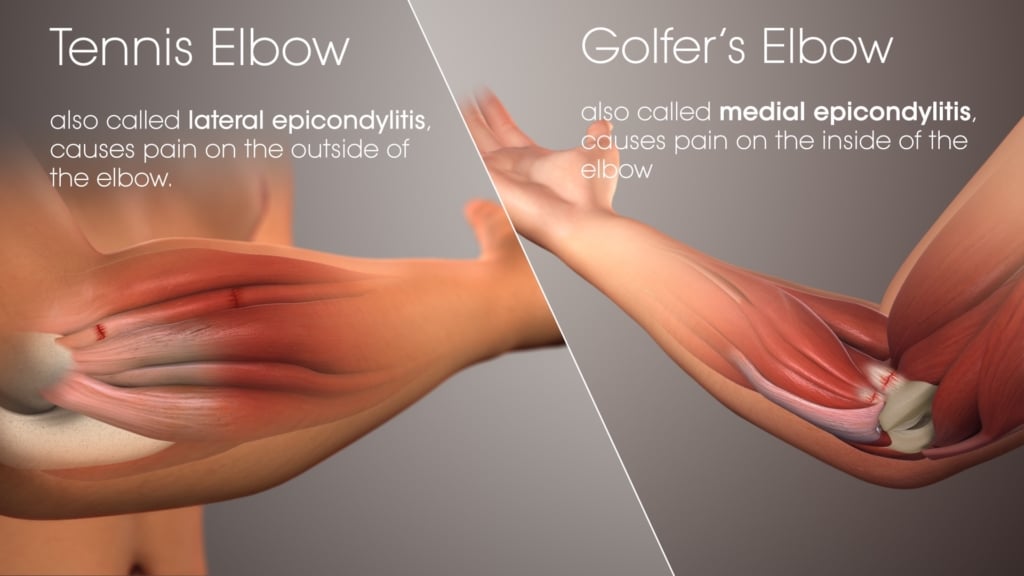What is TMJ syndrome?
Tendons are the transitional tissue that connect muscles to bones. At the elbow, these tendons are under increased stress with repetitive arm movements, in lifting or carrying objects, and in playing sports, among many other actions. Because your elbow is not a weight-bearing joint, it often responds well to treatment. This may mean changing motor habits, physical therapy, or shockwave therapy. Below, we’ll discuss the most common overuse ailments at the elbow and discuss treatment.

Golfers Elbow
Many of the muscles controlling wrist and hand movement attach at a bony protrubernace on the inside of your elbow called the medial epicondyle. With repeated, forceful movements, such as construction work or sports involving hitting or throwing, the tendons and muscle at the inner elbow may become inflamed and produce pain, stiffness, or weakness at the upper arm. This condition is called golfer’s elbow because many patients notice increased pain with contact or certain movements such as making a fist or hitting a golf ball.
Tennis Elbow
This condition is similar to golfer’s elbow in that it causes elbow pain, but in the case of tennis elbow, people experience pain at the elbow’s outer bony protrusion. The tendons attached to this lateral epicondyle are those engaged with raising (extending) the hand or the wrist. Tennis elbow presents most often due to repetitive movements such as hitting a tennis ball with a backhand swing. Similar actions such as painting, driving screws, and repetative mousing on a computer may aggravate this condition.
How shockwave therapy can help you?
Shockwave therapy is a non-invasive, effective treatment working to repair damage and improve blood flow to the site of an existing or previous injury. In the case of golfer’s elbow or tennis elbow, overuse or injury of the tendons or muscles controlling wrist and hand movement causes the body to lay down scar tissue. Scar tissue limits range of motion, causes pain, and restricts blood flow. The body requires a blood supply to repair healed tissue, and for this reason, the injury tends to persist. Using lithotripsy technology, shockwave therapy breaks down scar tissue, myofascial tears, and calcifications to promote healing and restore adequate circulation to allow for healing to occur. In addition, shockwave therapy is effective for treatment of plantar fasiciitis, adhesive capsulitis, and rotator cuff pathology, among other injuries.
References:

